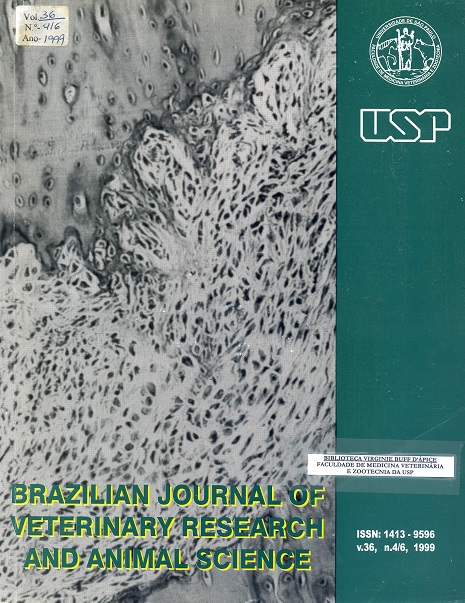In vitro viability of canine spermatozoa frozen in tris-fructose-citric acid extender with ethylene glycol
DOI:
https://doi.org/10.1590/S1413-95961999000400007Keywords:
Ethylene glycol, Cryoprotectants, Freezing, Semen, DogAbstract
The use of frozen semen has become increasingly popular in canine artificial insemination, stimulating research to improve freezing methods and extenders. In this study, was compared the final concentration of 5% ethylene glycol used in 3 equilibration protocols. In Method I, one part of semen was added to two parts of tris-fructose-citric acid with 7.5% ethylene glycol (Extender 2) and frozen without cooling. In Method II, one part of semen was added to two parts of tris-fructose-citric acid with 7.5% ethylene glycol (Extender 2) and cooled at 5ºC for 1 hour before freezing. In Method III, one part of semen was added to one part of tris-fructose-citric without ethylene glycol (Extender 1) and cooled at 5ºC for 1 hour. Just after this period, one part of 5ºC cooled tris-fructose-citric acid containing 15% ethylene glycol (Extender 3) was added to the previous extended semen, maintained at 5ºC for one additional hour and frozen. For freezing in each procedure semen was packaged in 0.5 ml plastic straws and placed for 20 minutes in vapor 5 cm above liquid nitrogen and then lowered into the liquid nitrogen and stored. All samples were thawed by immersion for 30 sec in a 37ºC water bath and immediately evaluated. Progressive motility was best after Method III (63%), which was not different from fresh semen (94%) but was better (p< 0.05) than after Method II (25%) or Method I (6%). Forward velocity was again best after Method III (2.9) comparable to fresh semen (4.6) and Method II (2.5), but better (p< 0.05) than Method I (1.7). Morphological abnormalities were lowest after Method III, but were not significantly different from Methods II or I. Most common abnormalities were detached heads and bent, hairpin and coiled tails. It was concluded that slow, step-wise equilibration in tris-fructose-citrate extender followed by extender with ethylene glycol before freezing seems to produce the best progressive motility and forward velocity in frozen-thawed canine spermatozoa.Downloads
Download data is not yet available.
Downloads
Published
1999-01-01
Issue
Section
VETERINARY MEDICINE
License
The journal content is authorized under the Creative Commons BY-NC-SA license (summary of the license: https://
How to Cite
1.
Vannucchi CI, Santos SEC dos, Visintin JA. In vitro viability of canine spermatozoa frozen in tris-fructose-citric acid extender with ethylene glycol. Braz. J. Vet. Res. Anim. Sci. [Internet]. 1999 Jan. 1 [cited 2024 Apr. 19];36(4):205-11. Available from: https://www.revistas.usp.br/bjvras/article/view/5748





